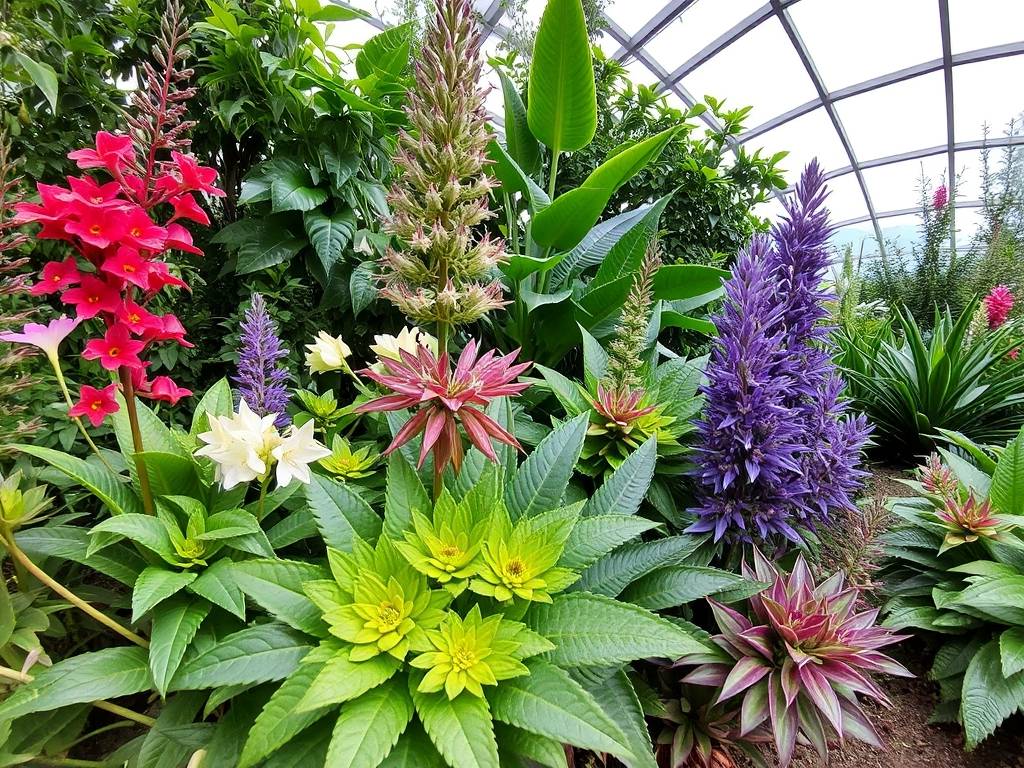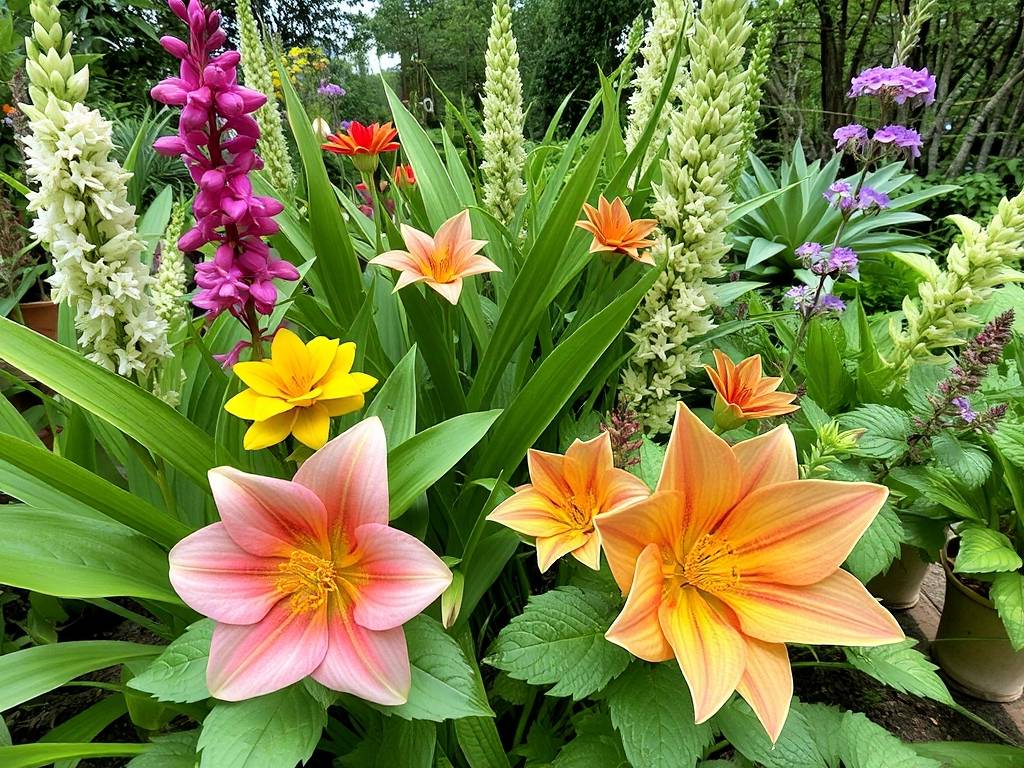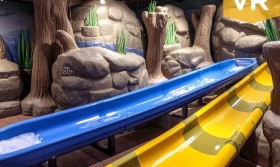A Virtual Eden: Exploring the World's Rarest Plants Through the Botanical Garden VR Collection
Have you ever wondered what it feels like to stand beneath the ghostly, spectral leaves of a plant that clings to life on a single, windswept cliffside in the Canary Islands? Or to witness the bizarre, otherworldly bloom of a flower that only opens once every decade under the cover of a Sumatran night? For centuries, such experiences were the exclusive domain of intrepid explorers and botanists, their stories and pressed specimens the only glimpses the rest of the world could get. The world's most fragile and geographically locked flora remained out of reach, their beauty and ecological significance a whispered secret. But what if you could embark on a global expedition to witness these wonders without a passport, a plane ticket, or the risk of harming a delicate ecosystem? Welcome to the future of conservation and discovery: the Botanical Garden VR Rare Plants Collection.
This is not merely a gallery of 3D images. It is a meticulously crafted, fully immersive digital ecosystem. The core mission of this virtual botanical garden experience is to democratize access to the planet's most vulnerable botanical treasures. It solves a fundamental problem for the curious, the time-poor, the immobile, and the environmentally conscious: how can we foster a deep, meaningful connection with rare plants that are physically inaccessible to 99.9% of humanity? The answer lies in this seamless blend of cutting-edge technology and profound ecological purpose.

Imagine slipping on a VR headset and finding yourself transported. The first thing you notice isn't a screen, but a space. You are standing in a hyper-realistic recreation of a cloud forest. A cool, digital mist hangs in the air, and the sound of distant, exotic birds is rendered in spatial audio, making you turn your head. Your virtual guide, a noted botanist, appears as a friendly hologram, welcoming you to the Rare Plants Collection. This is where your journey into the heart of botanical rarity begins.
Let's explore the benefits of VR for plant conservation education. One of the most powerful features is the ability to manipulate time and scale. You can witness the agonizingly slow, magnificent life cycle of the Puya raimondii, the Queen of the Andes. In reality, this plant grows for 80 to 100 years before erupting in a single, towering inflorescence of thousands of flowers, after which it dies. In the VR collection, you can experience this entire century-long saga in a breathtaking, accelerated three-minute sequence, watching the plant shoot skyward and burst into a spectacular floral finale. This immersive rare plant exploration allows for an understanding that a textbook paragraph or a static photo could never convey.

Furthermore, the collection directly addresses the critical issue of endangered species preservation. Take the Middlemist's Red (Middlemist camellia), one of the rarest flowers in the world, with only two known specimens existing in the UK and New Zealand. Physically visiting these plants is next to impossible for the public, and their security is paramount. Here, in the VR garden, you can not only approach the virtual Middlemist's Red but also "dissect" it. With a gesture of your controller, you can peel back its layers, see the intricate structure of its stamens and pistils, and access embedded information about its genetic history and the heroic efforts to save it from extinction. This interactive digital herbarium provides a depth of learning that is both engaging and profoundly impactful.
For those seeking a more structured learning path, the platform offers a solution through its guided virtual plant tours. These aren't just random walks; they are curated thematic journeys. You can join the "Plants of Prehistory" tour to walk among cycads and tree ferns, species that dinosaurs once browsed upon. Or, you might select the "Medicinal Marvels" tour, which highlights rare plants like the Pacific Yew, the original source of the cancer-fighting drug Taxol. Each tour is packed with contextual information, solving the user's need for curated, expert-led content that tells a story, rather than presenting a disjointed list of facts.
The technology also brilliantly solves the problem of spatial understanding. In a physical garden, a label might tell you a plant is from Madagascar, but the connection is abstract. In this VR environment for botany learning, when you select the bizarre, bottle-shaped Baobab tree, your entire surroundings morph. The curated garden fades, and you are suddenly standing on the dry, red soil of a Malagasy savanna. The sun is hot on your virtual skin, and you can see the unique ecosystem the Baobab supports. This contextual teleportation is a game-changer for global botanical education, creating visceral, memorable links between a plant and its native habitat.
A key concern for any modern educational tool is accessibility. The Botanical Garden VR Rare Plants Collection is designed to be a versatile resource. Whether you are a student in a classroom using a standalone headset, a university researcher analyzing plant morphology on a high-end PCVR system, or a grandparent exploring the gardens on a tablet with a 360-degree view, the experience is tailored to be meaningful. This multi-platform approach ensures that the future of botanical gardens is inclusive, breaking down physical and economic barriers to high-quality environmental education.
Perhaps the most emotionally resonant aspect is the collection's focus on "ghost" plants—species that are extinct in the wild but preserved in seed banks or through clonal propagation. The VR experience allows you to walk through a dedicated "Memorial Garden," where you can learn the stories of plants like the Wood's Cycad, effectively extinct since a single male plant remains. By giving users a tangible, visual connection to what has been lost, the platform fosters a powerful sense of stewardship. It answers the silent question, "Why should I care?" with a visceral, unforgettable experience.
In conclusion, the Botanical Garden VR Rare Plants Collection is far more than a technological novelty. It is a vital tool for conservation, a revolutionary educational platform, and a source of profound wonder. It solves the user's core desires: to see the unseen, to understand the complex, and to connect with the natural world in a meaningful, sustainable way. It brings the world's most incredible and threatened plants directly to you, transforming your living room into a gateway for global discovery and fostering a new generation of plant lovers and protectors. This is more than a visit; it's an awakening, a journey to the front lines of biodiversity, all from the comfort of your own home. The garden gates are open, and a world of rare beauty awaits.
















